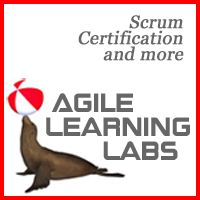The retrospective is a time-boxed meeting held at the end of a sprint or iteration. The team examines its processes to determine what succeeded and what can be improved. The retrospective is key to an agile team’s ability to “inspect and adapt” in the pursuit of “continuous improvement.”
The meeting’s goal is to have a positive outcome and identify one or two impactful items that will increase quality and effectiveness. The team then creates a plan to implement them in the next sprint. The emphasis is on actionable items, not a comprehensive analysis.
The agile retrospective differs from other methodologies such as “Lessons Learned” exercises, which usually aim to generate a list of what went wrong.
Retrospective facilitation is a distinct skill set. Retrospectives may take many forms, but there is usually a facilitator who may or may not be a team member. The process is generally broken down into three phases: data gathering, data analysis, and action items. Formal tools and exercises can be used to gather and analyze the team’s data. The team often has fun during the retrospective and utilizes different tolls and games to gather the data. The resource list below lists some suggestions for tools and games that can be used during the meeting.
Background Of The Term
The term retrospective was first applied to this meeting by Norman Kerth, who describes its origins in his 2001 book Project Retrospectives: A Handbook for Team Reviews: “Wayne and Eileen Strider, two fellow facilitators, suggested that we call what we do a retrospective. The word seemed appropriate; it didn’t carry any loaded meanings and could be applied to projects without the implication of success or failure.”
Further Learning
Agile Retrospectives: Making Good Teams Great – Book by Esther Derby and Diana Larson
Dixit Sprint Retrospective Game – Agile Learning Labs Blog
Agile Retrospective Resource Wiki – Agile Retrospectives Organization Site
Agile Retrospectives Done Right – Atlassian Agile Coach – YouTube – 5 Minutes

